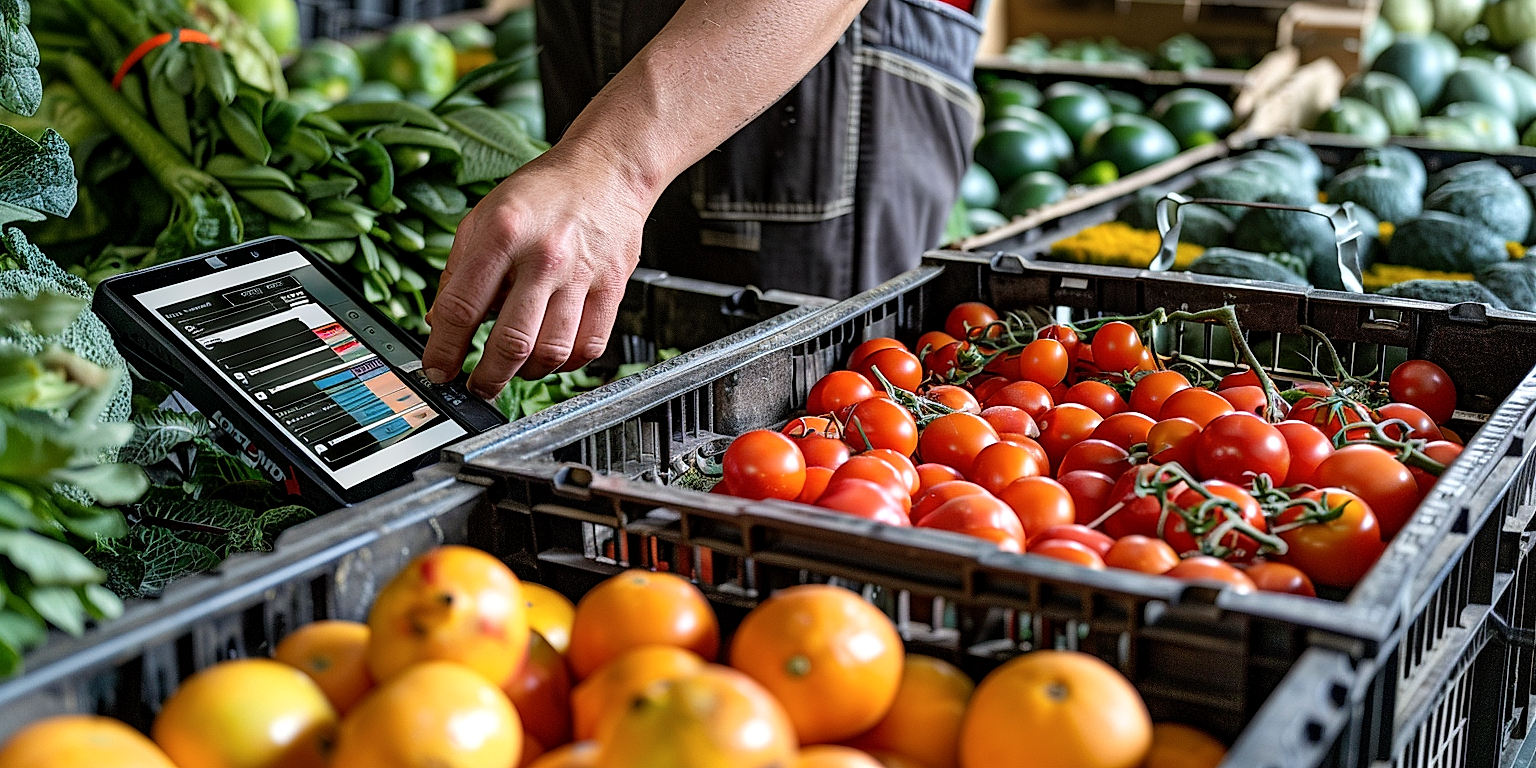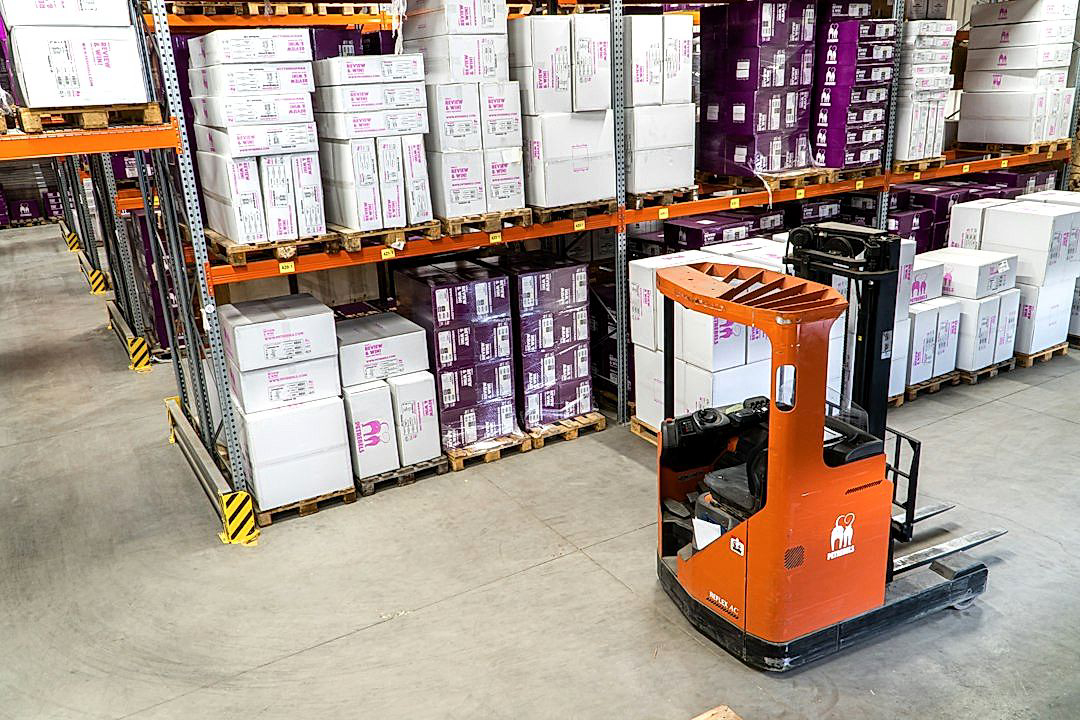Effective control and organization of inventory is a critical aspect in the domain of produce distribution.
An advanced inventory management system can greatly enhance efficiency and profitability, as it goes beyond merely keeping track of what is in stock.
This system typically encompasses aspects that range from procurement to sales.
A great deal of detail is required in inventory tracking; every single item of produce and its precise location requires meticulous documentation.
The complexities and challenges in achieving this task are plentiful.
Hence, insights into advanced inventory management can equip produce distributors with the tools necessary to streamline their operations, optimize resources, and ultimately, excel in the competitive marketplace.
Insights Into Advanced Inventory Management For Produce Distribution
1. Implement automation for real-time inventory tracking
In the complex world of produce distribution, real-time inventory tracking is a crucial strategy.
This strategy facilitates prompt decision-making and allows for efficient management of stock.
Implementing automation for inventory tracking can significantly optimize inventory operations, reducing manual tasks and human errors.
Automated real-time inventory tracking systems can provide up-to-date data about the current status of the produce.
These systems enhance precision in stock records and ensure continuously updated and accurate data.
This is particularly important for perishable produce, which requires swift and efficient distribution processes.
With automation, you can monitor the flow of goods in real-time, understanding where they are at any given moment.
This can help in the precise tracking of storage times and conditions, which is pivotal for produce quality.
In the event of a disruption or delay in the distribution chain, automated tracking can also pinpoint the location of produce.
This ensures that you can take immediate action to mitigate the impact of such incidents.
Automated inventory systems can also anticipate demand during various seasons and timeframes.
Using historical data, these systems can forecast demand, enabling proactive replenishment strategies.
In addition to real-time tracking, automated inventory systems also offer instant alerts and updates.
These alerts can be about fluctuations in stock levels, or deviations from the expected inventory status.
Such immediate notifications allow for swift interventions and rectifications, thereby enhancing the overall inventory management of the produce distribution.
Thus, implementing automation for real-time inventory tracking is not merely a technological upgrade, it is a significant leap in the overall efficiency of inventory management in the world of produce distribution.
2. Utilize Predictive Analytics for Stocking Strategies
The use of predictive analytics in stocking strategies can be a game-changer for produce distribution businesses.
This forward-looking approach involves analyzing past data to predict future stocking needs.
One of the main benefits of predictive analytics is that it can significantly reduce inventory costs.
This is due to its ability to predict demand and accordingly adjust inventory levels, minimizing waste, and excess storage.
Implementing predictive analytics can help drive efficiency in the inventory management process, leading to significant cost savings and improved operational performance.
This approach not only saves on costs but also enhances customer satisfaction as it ensures that products are available when customers need them.
Moreover, it also allows businesses to better anticipate and manage potential supply chain disruptions.
Predictive analytics for stocking strategies often involves the use of machine learning algorithms to analyze historical data.
The algorithm is then capable of predicting future demand patterns, considering variables such as seasonal trends, market behavior, and even weather conditions.
This level of predictive accuracy allows companies to optimize stock levels strategically, avoiding overstock and understock situations.
Adopting such a strategy also means companies can make informed decisions about their inventory investments.
They can understand when to invest more to accommodate anticipated demand or pull back when a decline in demand is expected, leading to better financial management.
Furthermore, the use of predictive analytics also enables businesses to identify slow-moving items, minimize carrying costs, and avoid dead stock.
It is crucial, however, to ensure a reliable and high-quality data source for this analysis to get accurate predictions.
The accuracy and timeliness of data can significantly impact the effectiveness of predictive analytics.
Predictive analytics, while powerful, needs to be seen as one component within a broader and more comprehensive inventory management strategy.
3. Adopt Advanced Waste-Reduction Approaches
Efficient inventory management in produce distribution entails implementing waste-reduction strategies.
By implementing waste-reduction approaches, distributors not only boost their profitability but also contribute to environmental conservation.
Advanced waste reduction helps to tackle the perennial problem of food waste in the supply chain.
Food waste poses a pressing global issue, with billions of pounds of produce wasted every year.
Adopting advanced waste-reduction approaches significantly helps in reducing this waste and driving sustainable operations.
Proper inventory management using advanced waste reduction techniques can significantly bring down the level of waste generated in the produce distribution industry.
Waste reduction can primarily be accomplished in two ways, namely: prevention and recovery.
Prevention entails using technologies and practices aimed at reducing the amount of waste produced.
For instance, by utilizing data analytics to forecast demand and supply, businesses can avoid overstocking which often leads to waste.
Recovery, on the other hand, involves finding alternative uses for the waste.
This could be achieved through donating excess fruits and vegetables to food banks or converting organic waste into animal feed or compost.
Another advanced waste reduction approach is the use of modified atmosphere packaging.
This technique extends the shelf life of fresh produce by slowing down the ripening process, which reduces waste significantly.
Moreover, training staff in handling and storing different types of produce properly decreases spoilage and leads to lower levels of waste.
Implementing these waste-reducing strategies requires a culture change within an organization, it involves employees at all levels of the supply chain.
By maximizing efficiency and accelerating product turnover, distributors can minimize waste and enhance both their profitability and sustainability.
4. Opt for cloud-based inventory management
As a part of your journey to advanced inventory management, one significant shift to consider is the transition to a cloud-based inventory management system.
This innovative approach can greatly improve your inventory tracking and management effectiveness, especially in the fast-paced environment of produce distribution.
Unlike traditional on-premise platforms, a cloud-based solution is accessible anywhere, as long as you have an internet connection.
One of its major advantages is allowing real-time insights into your inventory levels.
By having a clear, real-time view of your stocks, you can make the swiftest decisions to prevent spoilage or overstocking.
This not only ensures a high level of accuracy but also increases productivity by eliminating the need for manual tracking.
This elimination of manual processes also supports the promotion of a leaner and more efficient workflow.
Furthermore, cloud-based systems can seamlessly integrate with other digital tools and systems you are using in your business, be it your e-commerce platforms, shipping services, or your accounting software.
It provides a central point for managing all aspects of inventory, from ordering and receiving produce, to tracking sales and forecasting future needs.
Another important feature is its ability to scale as your business grows, without the need for complex, expensive upgrades.
You pay for what you use and can easily adjust your package as your inventory volume changes.
Cloud-based inventory management also typically includes automated backup and recovery options to mitigate potential data losses.
One might argue that security could be a concern with cloud solutions, but in reality, these providers usually employ top-of-the-line enterprise-grade security measures to protect your data.
The move towards a cloud-based inventory management is a strategic one, embracing digital transformation and leveraging technology to improve efficiency, effectiveness and reduce costs in the course of your produce distribution operations.
While it might require a substantial initial investment and a change of habits, the long-term benefits certainly outweigh these considerations.
By choosing a cloud-based inventory management solution, you’re positioning your produce distribution business for future growth and success in the competitive market landscape.
5. Integrate AI for Demand and Supply Forecasting
The integration of Artificial Intelligence (AI) in managing produce distribution not only simplifies the operation, but also enhances accuracy and efficiency in supply chain management.
AI is rapidly taking over multiple industries and has shown remarkable success in predicting demand and supply trends allowing businesses to better plan for their inventories.
AI algorithms are highly sophisticated and are capable of analyzing a vast amount of data to predict future trends based on historical patterns, seasonality, and market conditions.
These algorithms are continuously improving and learning from past data, this means their forecasting abilities get refined as more data is fed into them.
They are capable of automating repetitive tasks and providing detailed insights into customer behavior patterns, products life-cycle, and subsequently, enabling an advanced inventory management system.
This makes AI an invaluable asset within the field of produce distribution allowing businesses to maintain the optimal amount of stock and reducing overstocking or understocking situations significantly.
The critical function where AI exceptionally contributes is in its ability to minimize waste by maintaining a balance of demand and supply.
It identifies trends and patterns, thus precisely anticipating customer demand and ensuring accurate inventory levels, significantly reducing the chances of having perishable goods wasted.
This not only leads to financial savings but also contributes to the environment by reducing waste.
Furthermore, integrating AI into inventory management results in improved customer satisfaction as it ensures that products are always available when the customer needs them.
Customers don’t experience ‘out of stock’ scenarios and businesses enjoy improved customer retention—a win-win situation for both.
Adopting AI for demand and supply forecasting also confers a competitive edge to businesses as they can remain proactive rather than reactive when it comes to inventory management.
Most importantly, the use of AI also leads to quicker decision-making processes due to the readily available predictive analysis, which infers that businesses can operate more efficiently and economically.
While integrating AI into inventory management might require an initial investment, the returns are worth it thanks to the increased efficiency, reduced costs, and the ability to predict market trends accurately.
Therefore, with these benefits, it’s clear that AI holds massive potential for revolutionizing demand and supply forecasting in advanced inventory management for produce distribution.
The Bottom Line
Savvy utilization of modern technological solutions is essential for effective inventory management.
The integration of automation in real-time tracking, predictive analytics in stocking strategies, and AI in demand forecasting significantly enhances efficiency.
Meanwhile, adopting advanced waste-reduction approaches assists in achieving sustainability.
Shifting to cloud-based inventory management systems not only streamlines operations but also establishes a robust system for managing unpredictable market changes.
Thus, these collective advancements equip businesses with unprecedented accuracy and flexibility in inventory management, priming them for success in a competitive and rapidly-evolving marketplace.




